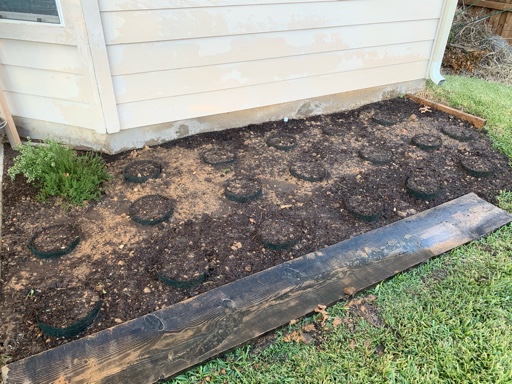IkemanTx
5 year old buck +
I have had major issues the last few years keeping trees alive in containers in the 100°+ heat here in Texas. So, I have decided to do a trial run of in-ground.
I picked up a case of RootMaker’s in-ground 8” knit root containment bags. They are 8” in diameter, and about 12” deep when filled. I spent about 4 hours digging out the holes, mixing the fill 50/50 with compost, and re-filling.
I decided to direct seed acorns right into them. I hope to end up with 5 sawtooth oaks, 6 post oaks, and 7 chinkapin oaks. They are right in the flowerbed against the house so they should be easy to take care of.
If this goes well, I will probably do about 100 on the side of my parents vegetable garden next year, to take advantage of their overhead irrigation and weeding skills.

Sent from my iPhone using Tapatalk
I picked up a case of RootMaker’s in-ground 8” knit root containment bags. They are 8” in diameter, and about 12” deep when filled. I spent about 4 hours digging out the holes, mixing the fill 50/50 with compost, and re-filling.
I decided to direct seed acorns right into them. I hope to end up with 5 sawtooth oaks, 6 post oaks, and 7 chinkapin oaks. They are right in the flowerbed against the house so they should be easy to take care of.
If this goes well, I will probably do about 100 on the side of my parents vegetable garden next year, to take advantage of their overhead irrigation and weeding skills.

Sent from my iPhone using Tapatalk


